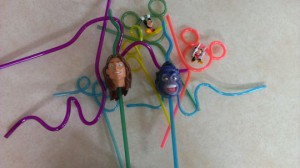When I was a kid, I was a big fan of corn on the cob. Eating it was a messy and demanding ritual—first, melt a pat of butter on top of the hot corn, carefully turning it to spread the butter evenly, without missing a spot. Then sprinkle on some salt, but not too much anywhere, too much would be yucky! Then, eat the corn, nibbling neatly along the rows of tasty kernels while pretending to be a bunny in the garden…
Not surprisingly, I got out of the habit of eating corn on the cob when I grew up. Plenty of other foods were quicker and simpler. The busy demands of adult life in the modern world didn’t mesh well with elaborate rituals and play-pretend games at the dinner table, however much fun they might have been long ago. And what was the point of just chomping one’s way through the corn without appreciating all the little details?
I bought some corn skewers a few years ago, when my daughter said she’d like to cook corn on the cob. She cooked it once, and I have no idea what became of the pair of skewers she used; they probably got thrown away with the cob. The remaining skewers, still neatly packaged, sat on a kitchen shelf until I de-cluttered it last week.
Unlike most of the clutter I’ve found, I did not throw away the corn holders. They’re still just as useful as they ever were, so I decided that because my daughter was the one who wanted them, I’m going to put them in a box of stuff for her to take when she moves out. She graduated from college in May and came home for a couple of months while studying for her licensing exam as a nurse. Soon she’ll be off again, to a new apartment and a career. Life moves on, more quickly than we realize; and clutter should, too.
About Clutter Comedy: Every Sunday (which I envision as a day of rest after a productive week of de-cluttering) I post a Clutter Comedy article describing my most memorable clutter discovery of the week. Other bloggers who wish to join in are welcome—just post a link in the comments! There’s no need to publish any “before” photos of your clutter, if they are too embarrassing. The idea is simply to get motivated to clean it up, while having a bit of fun too!









